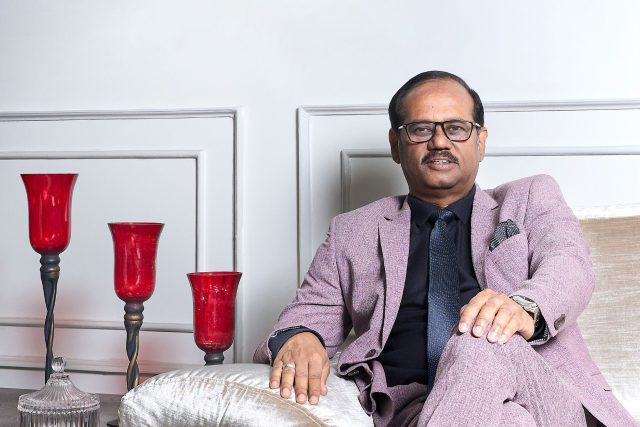Mr. Shahidullah Azim
Managing Director
Classic Fashion Concept Ltd
Vice President
Bangladesh Garment Manufacturers and Exporters Association
It is not easy to achieve great success. While there are many shortcuts, the challenging and steady walk is what takes a person many miles ahead. Business is not for everyone. It is a decision to take on difficult challenges to contribute to society. Running a business in today’s highly competitive business environment is extremely difficult. The globalized business environment, development of information, new forms of rivalry, ever-demanding customers, fast-changing technology, and fluctuations in economic growth bring both possibilities and problems.
Let us introduce a challenge taker, Mr. Shahidullah Azim, who overcame all obstacles in the apparel industry in his long business career and became one of the most successful businessmen in Bangladesh. Shahidullah Azim is a Bangladeshi businessman, entrepreneur, and philanthropist who has contributed significantly to his country’s economic and social development. His success can be attributed to several factors, including his entrepreneurial spirit, business acumen, and commitment to social responsibility. Initially, he worked with his third elder brother’s buying house company, where he learned so many things and found the drive that inspired him to start his own business.
He is the founder of the Dhaka-based conglomerate Classic Group, which has diverse business interests in textiles, garments, real estate, and hospitality. He has significantly contributed to Bangladesh’s economic growth and increased global competitiveness. He has been involved with the Bangladesh Garment Manufacturers and Exporters Association (BGMEA) for many years and served as the organization’s Vice President. He has also worked in several leadership positions in other business associations and trade organizations in Bangladesh.
This amazing man has consistently promoted the growth and development of Bangladesh’s textile and apparel industries. He has worked to enhance the industry’s competitiveness, improve working conditions for workers, and ensure compliance with international labor standards. Additionally, he has been instrumental in forging partnerships between Bangladeshi garment manufacturers and international buyers.
Throughout his career, Mr. Azim has demonstrated a deep commitment to social responsibility and has actively worked to improve the lives of people in his community. He has supported the development of education, healthcare, and other community services in the country. He has established several charitable organizations and foundations, including the Azim Foundation, which provides education, healthcare, and other essential services to underprivileged communities in Bangladesh.
Mr. Azim’s success has been widely recognized, and he has received much recognition and awards for his contributions to business and society. He was awarded the prestigious Businessperson of the Year award by the Dhaka Chamber of Commerce and Industry in 2006 and has been recognized by several other organizations for his outstanding contributions to business and society. In addition, he is widely respected for his vision, leadership, and dedication to making a positive difference in the world.
We should appreciate and recognize the efforts of this living legend, who utilized his talent and resources to create positive change in his communities and beyond. In addition, he serves as an inspiration to aspiring entrepreneurs and business leaders around the world.
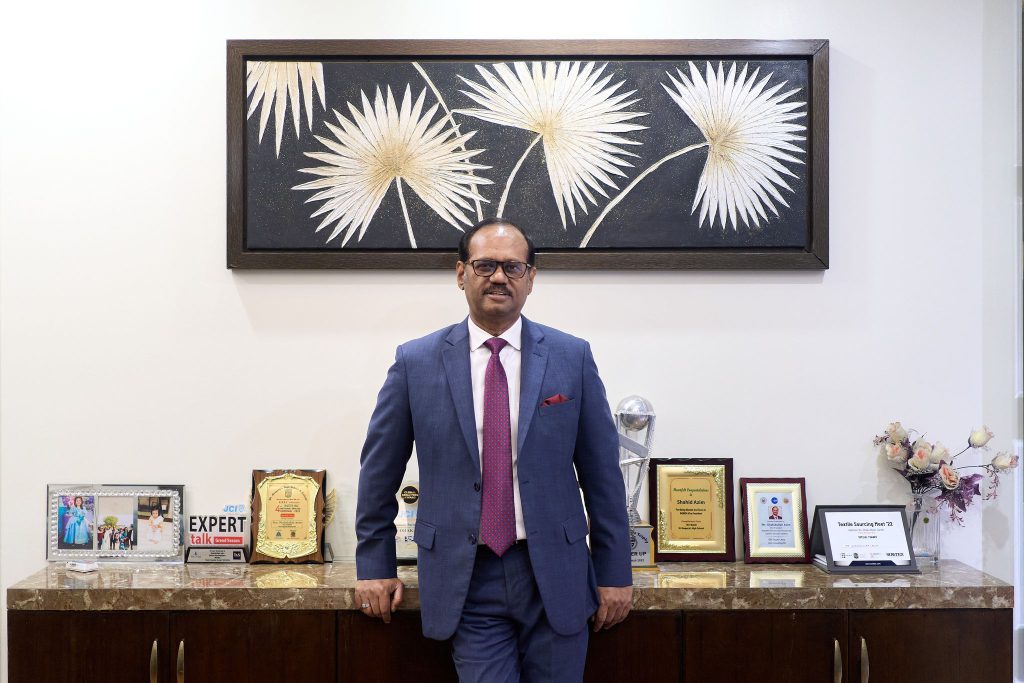
Cogitation of Work
The InCAP: Mr. Shahidullah Azim, would you please share your journey of becoming the Managing Director of Classic Fashion Concept Ltd.?
Mr. Shahidullah Azim: After completing my study, I started my career at my elder brother’s company named “Shah Safari buying house,” one of Bangladesh’s leading buying houses. From there, I learned about all the technical and commercial apparel-related things. After that, I started my own buying house back in 1991. During that time, I worked for some big brands, such as German brand Lidl, U.S.-based brand Alan Haddad, Spotlight, ILC Incorporated Ltd, etc.
From 1991-2004, I worked with more than 70 apparel manufacturing companies in Bangladesh. In 1999, I established 12 line manufacturing garments, “Classic Fashion Concept Ltd, and 8 lines in its sister concern Coastalino Attires Ltd.” to support our customers with sampling. Initially, we used to manufacture shirts, nightwear, and trousers. Your significant customers were Walmart, LiDL, Kenneth Cole, Loblaws, etc.
I was the president of a few social clubs in Dhaka, such as all community club limited, the Gregorian club determined, etc. I have been attached to BGMEA for the last 16 years. From 2009 to 2013, I performed my duty as a director of the BGMEA. After that, I was the vice president of the BGMEA board from 2013-2015. In 2021, I was again elected vice president of the BGMEA board. Therefore, from 2021 to now, I have been doing my duty as an office bearer of BGMEA.
What do you think is the biggest challenge in Bangladesh’s RMG industry recently?
The RMG industry of Bangladesh is time-tested. Over the last four decades, the industry has faced many challenges and has overcome those. However, when the industry was booming with the highest-ever growth rate, COVID-19 has posed an unprecedented situation before all of us. The global supply chain collapsed during the COVID-19, and we witnessed many unpredictable situations like- non-payment, discounts, delayed payment, deferred shipment, etc.
But with the support of the government and other stakeholders, we have proved our resilience and successfully balanced the lives and livelihoods of 4 million people in this industry.There was a positive recovery in export during FY2021-22, but due to the Russia-Ukraine war, the world is heading toward an economic slowdown. Inflation has reached record heights in advanced economies, and the price of food and fuel are escalating. All of these would disrupt the global market in terms of demand for clothing and expenses. The weakening Euro against the US dollar is also a significant concern. Due to current geopolitical tension, the price of raw materials, fuel, and freight has increased significantly, which has increased our production costs by 40%.
Right now, a supplier’s biggest challenge is ensuring the order flows and sustaining the business. Because every factory has to set its future business viability and investment plan, which has become difficult in this current situation. At the same time, recovery from COVID is still faltering globally. The loss our factories made is yet to be recovered. We are still paying the government’s installments of the wage support loan while bearing regular expenses. Apart from that, the other challenges of this industry are over-concentration on some essential category products and few markets like the EU & USA, lack of backward linkage capacity as we have to import 60% woven fabrics, LDC graduation, etc.
What potential do you perceive in the RMG industry, and how will they help Bangladesh’s economic development?
One of the main pillars behind the impressive development of Bangladesh is Readymade Garments (RMG) industry. Over the 40 years, the industry continuously contributes to the country’s GDP, foreign currency earnings, job creation, women empowerment, poverty alleviation, and so on, driving Bangladesh towards becoming a prosperous nation. Despite many difficulties faced by this sector over the past years, it has successfully carved a niche in the world market and continued to show robust performance.
Our sector’s resilience has enabled us to achieve the second highest RMG exporter’s medal in the world and make “Made in Bangladesh with pride” a worldwide famous logo. Over the 40 years journey, we have achieved extraordinary growth of USD 45.71 billion in export and have many more opportunities ahead of us if we can be tapped correctly. Achieving excellence in product diversification and value addition is one of the critical opportunities for RMG Factories from Bangladesh. With only a 6.37% share of the global market, Bangladesh occupies a small portion, and we have substantial untapped potential ahead of us. We have opportunities in the EU and USA, as well as in emerging markets.
Despite being the second largest apparel exporters in the world, 80% of our garment exports fall within the price range of 15 dollars per KG, and only 20% of the exports get a price above the 15 dollars range. Leaping from essential items to high-end products, driven mainly by a shift from cotton to noncotton, is a time-befitting challenge and opportunity for us. We have an immense opportunity to attract local and foreign investment in the backward and forward linkage for expanding the value chain, given the investments being made by our government in infrastructure development and mega projects, including 100 SEZs. More investment means more business, export, and employment, which will ultimately increase our industry’s contribution to Bangladesh’s economy.
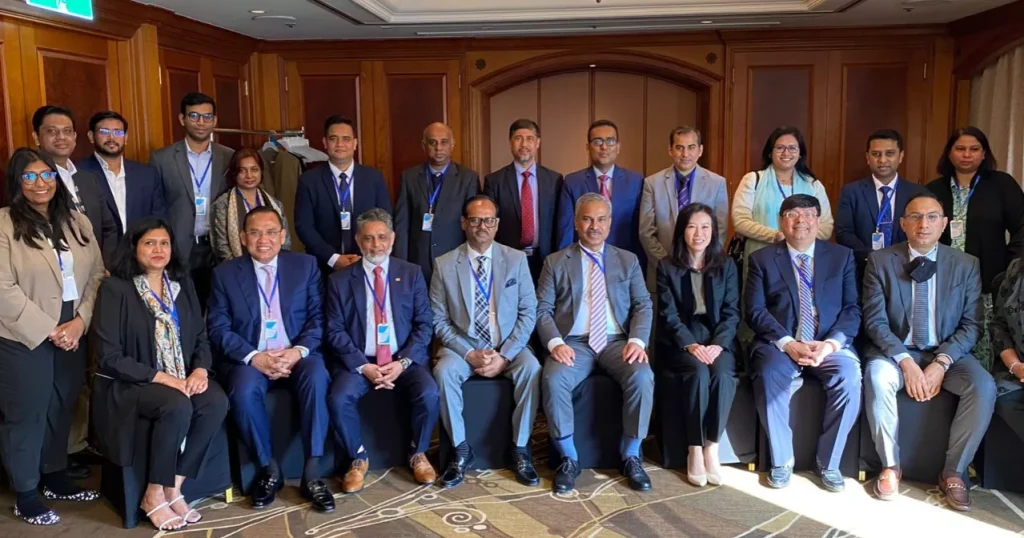
In 2018, Human Rights Watch documented sexualized threats from factory managers and supervisors against Bangladeshi female garment workers. Mr. Azim, please tell us about your initiatives to resolve this issue in Bangladesh.
The RMG industry of Bangladesh employs 4 million workers, where more than 60% are female in the age range of 18-30 years. Since they spend most of their time inside the factory, ensuring their safety and well-being are very critical for the factories. To keep the workers free from any harassment, most of the factories have taken the initiative of establishing an anti-harassment committee. As per Honorable High Court Verdict, BGMEA issued a circular to its member factories to form an “Anti-Harassment Committee” in every factory. The BGMEA Monitoring team is visiting the factory to look into the matter.
According to the BGMEA anti-harassment survey report 2020, the complete factory that formed the anti-harassment committee visited factories, where a few factories received complaints from their workers. And the harassment reported was scrolled for breaking the factory rules as per “A Survey Report on the Garment Workers of Bangladesh” published by the Asian Centre for Development in 2020 shows that the workplace misconduct faced by female workers is as low as 1.5. Regarding the number of cases, only 10 out of 656 female workers in the survey reported it. Besides factories have elected worker Participation committee & Welfare committee who take care of any abusement.
As an apex body, BGMEA initiated and signed MoU with Moner Bondhu to organize an awareness program at the factory level on “Better Mental well-being, sexual harassment at workplace and improving productivity” with a particular focus on women workers. Under the ILO project on “Promoting Social Dialogue and Industrial Relation in the Bangladesh RMG sector (SDIR),” BGMEA trained 476 persons from 56 factories in the areas including; Grievance Handling (8 batches), Best HR Practices (6 sets) and Supervisory Skills (3 sets)
BGMEA, in collaboration with BRAC, has initiated a training program on “Safeguarding training on Gender-Based Violence & Workplace harassment” to develop a harassment-free workplace and promote workplace safety. Initially, the program will run through 40 RMG factories. The training will be provided to the top and mid-level management. BRAC and BGMEA collaboration will scale up the project. Achieving gender equality and women’s empowerment is crucial to keep Bangladesh’s current development pace. Keep this in mind, and empower women through education and training. Around 90 young garment workers are pursuing higher studies at the Asian University for Women with their employers’ support. This shows the dedication of the industry to be gender-neutral.
The US Green Building Council has awarded certificates for Leadership in Energy and Environmental Design to 178 manufacturers in the country’s textile industry, according to the BGMEA. Do you think the ready-made clothing industry has now achieved the highest level of environmental compliance ever?
In the past decade, we have made significant progress in green industrialization. For example, our clothing factories are safer, more dynamic, modern, energy-efficient, and environment-friendly. We currently have 191 LEED green-certified factories in the world by USGBC, of which 66 are platinum, and 111 are gold rated. Forty-nine out of the global top 100 LEED green factories are in Bangladesh. It is also important to mention that around 550 factories are in the pipeline to get their certification. These are state-of-the-art factories equipped with energy and natural resources, having facilities like rainwater harvesting and daylight saving, and having a healthy and hygienic atmosphere.
All these testify to the paradigm shift of philosophy, mindset, and vision of our entrepreneurs in the industry. That’s why they invest much money to make the supply chain cleaner and greener. Apart from that, currently, our factories are investing considerable capital in renewable energy, particularly solar panels. In addition, many factories are using resource-efficient machinery in their manufacturing. When we are going green and adopting cleaner production practices, it not only saves our environment but also improves our efficiency and competitiveness. This revolution of being green and resource-efficient has set a unique example in the world.
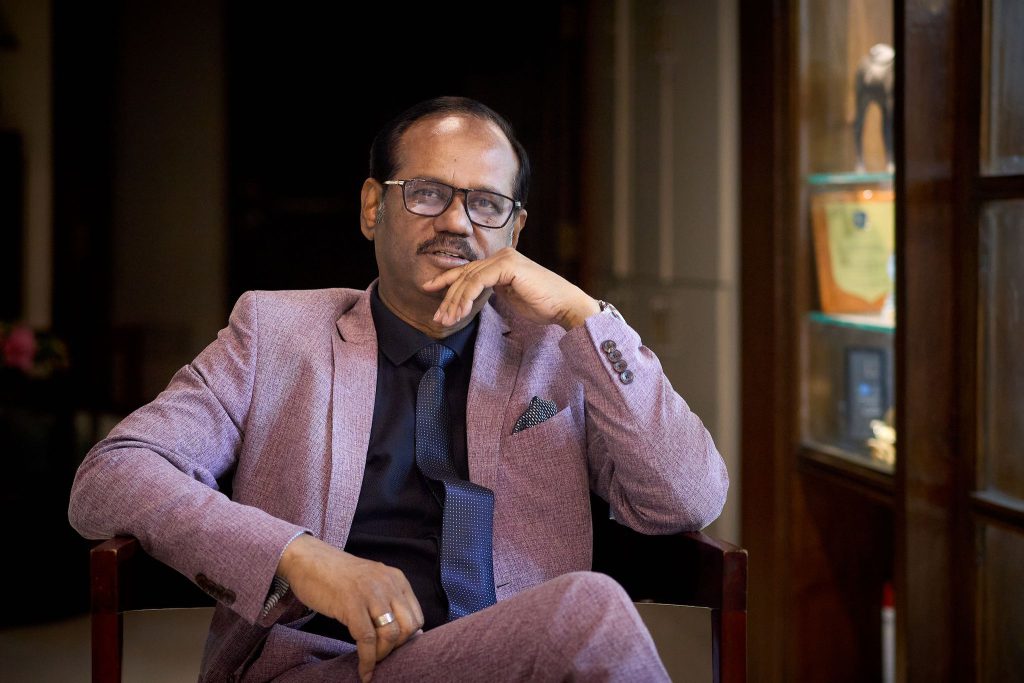
We have noticed that Bangladesh has become a popular place to buy denim products because of the country’s rapid production times, backward solid linkages, and affordable prices. Do you think it is helping Bangladesh to keep up its leadership in the world market?
Undoubtedly, denim is one of Bangladesh’s most prominent sectors in the RMG industry. In the early 80s, we started this industry with a few products and only 12000 dollar exports. Today, we have become the 2nd largest RMG exporter in the world, and we can proudly say that Bangladesh is the largest denim import source for both Europe and USA in the world. Currently, Bangladesh holds 22.64% shares of total denim imported by the USA.
According to OTEXA, the USA imported 943.70 million dollars of denim garments from Bangladesh in 2022. During the past ten years, USA’s denim import from Bangladesh has grown by almost 8.49% annually. On the other hand, the EU’s denim import from the World was 4.21 billion dollars in 2022 (Jan-Oct), whereas the share of Bangladesh was 30.49%. EU’s Denim import from Bangladesh has grown by 5.77% annually compared to 2011 & 2021. It proves how much the denim industry of Bangladesh has progressed in the past decades.
We currently have 40 denim fabrics manufacturers’ mills where the annual production capacity is 28 million meters of denim fabrics which is 40 % more than five years ago. Currently, more than 370 readymade garment factories produce denim items. Variations have come in denim products over the past decade. Previously, Basic Blue Denim was used to be manufactured; now, we can apply different effects on color, fit, size, wash, trims, and products. As a result of all these value additions, we can create high-value products. In addition, modern technologies, such as waterless dying and Ozone washing, are being used to manufacture denim, reducing water use.
Besides, Bangladesh has the highest number of Platinum LEED-certified denim mills and garment factories. These will all be enough to keep up our leadership in the global denim market.
On February 7, 2023, the Netherlands and Bangladesh attempted to strengthen their collaboration to increase the competitiveness of Bangladesh’s ready-made garment (RMG) sector. Do you think the Bangladesh-Netherlands partnership can potentially transform the RMG sector?
Bangladesh is the 3rd largest apparel source for the Netherlands. In the fiscal year 2021-22, we exported 1.47 billion dollars of apparel to the Netherlands. Our apparel export to the Netherlands has increased by 10.32% annually in the last ten years. Apart from export, The Netherlands is one of Bangladesh’s major trade and development partners. For example, the Netherlands government financially supports the Partnership for Cleaner Textile (PaCT) project.
The bilateral relationship between Bangladesh and the Netherlands is also evolving, from a relationship based primarily on development, towards a relationship based on mutual trade and investment. So I’d hope to see that we can prioritize collaboration in the knowledge exchange sector, particularly in innovation, technology upgradation, design, etc., and ultimately more business.
According to preliminary data issued by the Export Promotion Bureau, readymade garment (RMG) shipments from Bangladesh climbed by 16.61% to $3.366 billion in the first month of fiscal 2022–23 (July–June) compared to exports of $2.887 billion in July 2021. Do you anticipate that in 2023, exports will exceed the target rate significantly?
We have already completed seven months of the current fiscal year 2022-23. During July-January of FY 2022-23, our RMG export reached 27.41 billion dollars. As per the export promotion bureau, during the mentioned period, our export target was 26.17 billion dollars, which means we are 1.24 billion ahead of the targeted amount. If we analyze the single month’s export data, we have achieved more than 4 billion dollars in the last three consecutive months, which is encouraging. It only reflects how committed and resilient we are, the support we are getting from our workers, and the confidence our valued customers have in us.
Yet, there are challenges behind such an impressive growth picture. The ongoing crisis caused by the Russia-Ukraine conflict has created turbulence in the global economy, especially its spurring inflation in our major markets. New orders have also fallen in most of our factories. As a result, many factories have already reduced their production hours.
But I believe that with the support of the government, we will overcome the situation with the all-out efforts of our manufacturers, buyers, and workers. And if the current growth continues in the coming months, definitely our exports will exceed the target of 46.80 billion dollars for the fiscal year 2022-23.
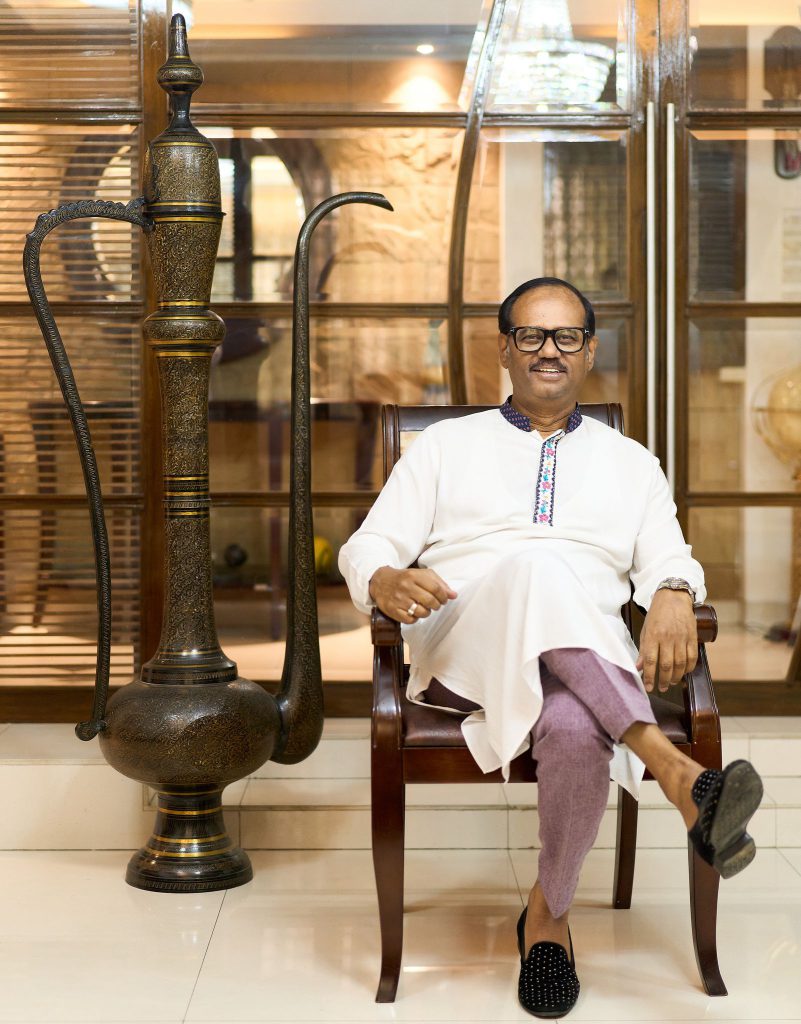
In Bangladesh, most merchandisers lack that degree of concentration, organizational abilities, and teamwork. Mr. Azim, please tell us how they will overcome these problems.
There is a massive gap between the skills produced by our educational institutes and the demand by the industries. The industry–academia linkage is essential because our growth depends on our ability to move to diversified products which require complex skills. The job market has to be ready with the skills necessary to meet contemporary production techniques, product sophistication, and fashion trends. Excessive concentration in a few skills makes diversification difficult.
At the same time, the academic programs should be complemented with real-life training. Often, a person who received a classroom education needs to perform better in a real-life atmosphere. Moreover, classrooms usually need to be adequately equipped with laboratories. So the linkage between industry and academia has to be drawn by changing the conventional way of education; we need to integrate more practical education.
From BGMEA, we have also taken several initiatives. One such initiative is the internship program at BGMEA which we will start soon. To meet the rising demand, BGMEA University of Fashion & Technology (BUFT) was set up in March 2012 and dedicated to developing human resources for Bangladesh’s readymade garment and textile sectors. Every year, several many graduates from BUFT join this industry. We have also created the opportunity for the 90 female workers to pursue their studies at the Asian University (AUW) for Women. Among them, 40 girls have completed and joined the industry in different positions. We will cooperate with AUW to facilitate the enrolment of 500 qualified females working in RMG factories in Bangladesh within the next few years.
To improve skills and connect a bridge between the industry and updated technologies that are being used across the globe, BGMEA also established a “Centre of innovation, efficiency, and OSH.” In this center, we will focus on newer avenues of enhancing our competitiveness through efficiency improvement and cost optimization.
According to the survey, most female garment industry employees have back discomfort, eye stains, malnutrition, respiratory issues, and essentials like bone difficulties and complicated pregnancies. What steps do you plan to take to protect the health and safety of female industrial workers?
In the last decade, the industry has made significant progress in ensuring workers’ health and well-being. Most of our factories currently maintain health care centers, eye care facilities, daycare centers, fair price shops, and so on within the premises. Many also run schools, hospitals, and other charitable initiatives for the community and employ physically challenged people. A few factories also run ‘mini fire brigades’ for themselves and the neighborhood.
Many garment factories are arranging awareness generation programs for their workers regarding menstrual hygiene, reproductive health, family planning, and other related matters. Alongside females, the male workers and supervisors also participate in those training and awareness programs, which makes the programs more effective. Furthermore, BGMEA has collaborated with the Health, Nutrition, and Population Programme of BRAC on the health and nutritional well-being of RMG workers. Research revealed that female factory workers suffer from chronic diseases, particularly anemia. Under this initiative, a study will be conducted to know the current nutritional status of RMG workers. Besides, various supplements and vitamins will provide to address nutrition gaps.
Besides, BGMEA, in collaboration with UNFPA, has run a project titled- “Promotion of reproductive health, gender equality and women’s empowerment in the RMG sector. BGMEA is working with SNV Netherland Development for worker Health Safety, Family Planning, and Eye Treatment and providing free medicine. A tripartite MOU has been signed between BGMEA, Engender Health & DGFP, under which about 145 factories are getting family-planning commodities and awareness-resigning. At present, all of our health centers are receiving contraceptive items from the government and distributing them free of cost among the workers.
Besides, BGMEA’s 12 health centers provide primary health care facilities and medicines free of cost. The centers also run awareness programs on HIV/ AIDS, tuberculosis, reproductive health, and the use of contraceptives.
The method of producing clothes is currently getting more automated to meet the growing consumer demand, cut down on errors, and keep production costs down. Do you plan to implement AI in our garments industry?
In the 4th industrial revolution era, automation in the production supply chain is becoming crucial to achieving a sustainable export ecosystem. Automated technology adaptation is now inescapable. However, Bangladesh’s RMG industry is still at the beginning of automation, while some factories are trying to adopt it. Knitwear is a significant subsector of apparel export in Bangladesh. Automation in knitwear manufacturing started long back, particularly in flat knit (i.e., sweater) manufacturing with the emergence of jacquard knitting.
Currently, knitted fabrics are significantly produced by automatically operated circular knitting machines. At the same time, the use of technologies like laser-cutter, sexbots, 3D printers, etc., has been observed in garment manufacturing.
Some factories use technology like IOT to analyze sewing motion, radio-frequency identification RFID for production and inventory tracking systems, innovative dying systems, automatic dosing systems, intelligent garment measurement systems, finishing roll QC systems, mobile apps for QC, etc. In addition, automated screening tools are being used to detect organic and zero hazardous chemicals, which reduce water and energy consumption.
Besides, factories also use different cutting-edge technologies and auxiliaries to make the processes and finishing jobs smoother. For example – low liquor ratio dying machine, ozone wash, use of organic chemicals, laser printing, waterless dying, etc. All these technologies make the production processes leaner and cleaner and give an extra edge to the industry’s competitiveness in the long run.
Mr. Azim, what new developments do you want to see in Bangladesh’s RMG industry?
In the last fiscal year 2021-22, we crossed a milestone of 40 billion dollars, encouraging us to set USD 100 billion export target by 2030. In just the concluded year 2022, our RMG industry has developed a new landmark Of US$ 45.70 billion worth of export in a single year.
Apart from exports, in the past few years, we have quickly transformed our manufacturing into a responsible undertaking – in all respects – whether caring about social norms or the environment. We continuously improve and catch up with the valued standards and norms. As the apex association of the garment industry in Bangladesh, the BGMEA has taken a series of initiatives under its Sustainability Vision 2030 which aims to reduce 30% of carbon emission of sustainable raw materials, 50% reduction of groundwater usage, 100% use of ZDHC chemical usage, 30% reduction of energy usage, 20% use of renewable energy and 30% reduction of deforestation. The ‘Race has fixed these targets to Zero’ GHG emission, SDGs, and National Priority Indicators (NPIs) of the Government of Bangladesh. With all these efforts, we are striving to secure more business.
In the future, we must focus on diversification in products, fabrics, and markets. In addition, we must focus on value addition, technological upgradation, innovation, and design development. Currently, new innovative ways of production are being used in the factory, such as auto-trimmers and up-cycling to reduce waste, alongside 3D virtual imaging to cut down on physical sampling.
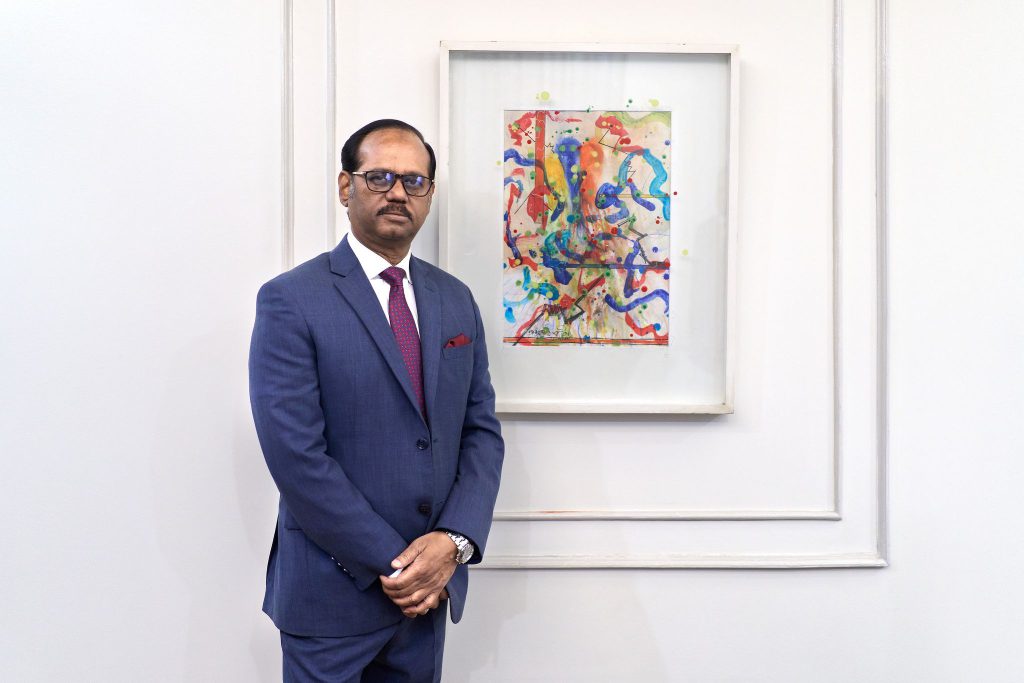
Self Portrait
You are one of the renowned and leading business personalities in the country who has been contributing a lot to the growth of our national economy for two decades. However, we would like to start this section by talking about your childhood. How were you as a child?
In my family, I was the youngest child. My family always treats me with priority and respect. I went to a missionary high school for my education. I participated in athletics and basketball as a child and student. Most of our teachers are from North America and Canada. We like going to school for more reasons than just learning. We participate in discussions, science fairs, etc. There were a lot of Muslims, Christians, and Hindus there. People here speak a wide variety of languages, including Chinese and Pakistani. Thus, our community is diverse. Learning foreign languages is beneficial to us. I speak Hindi and Urdu quite well. I can read Hindi as well.
Mr. Azim, how would you define your long and bright business life?
After my education, I worked for my third older brother’s “Shah Safari” buying Company. It was a pioneer in the nation’s buying house industry. I am solidly connected to this organization because it was where I initially learned about the RMG industry. Afterward, I started my own small business, which was buying a house. From 1991 until 2004, I operated a profitable buying-house company. We open our factory to assist our clients with distribution or sampling.
These are the explanations for why I work in this field. But I was active in various areas, including production and merchandising. After that, I established my own company and currently operate three factories. My next generation will take care of it, and my sons will lead my company. I have more time now to help the garment industry. I served as the BGMEA board’s vice president twice and as a director three times. I have much experience because I run the BGMEA board and participate in numerous BGMEA activities.
What was your first factory name?
Classic Merchant. It is the best-buying house in Bangladesh. We are more concentrated on production.
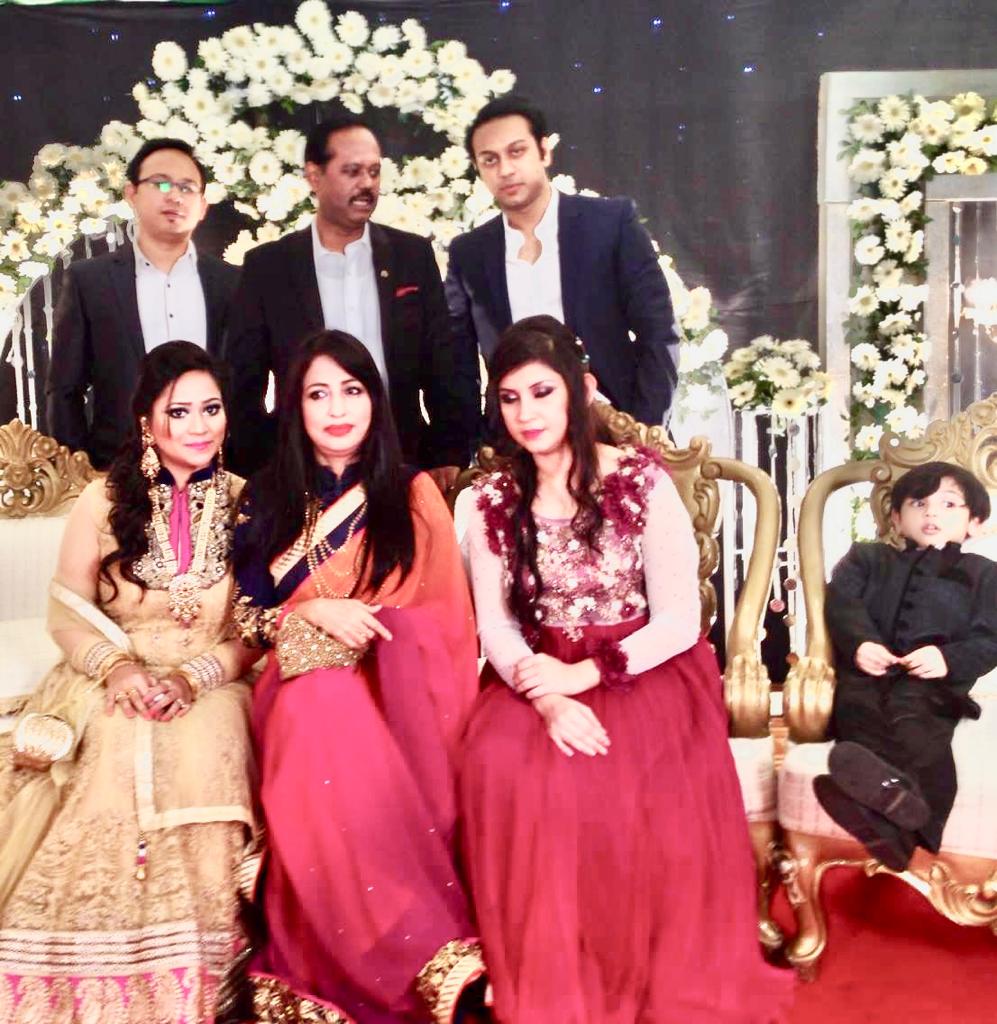
Who was your first buyer?
“Alan Haddad” from the USA.
We are attentive to know the influence or inspiration that shaped you and contributed to becoming the person you are today.
It was Shah Safari’s owner, Mr. Habibullah, my elder brother.” I want Bangladesh to make significant strides in the RMG industry. Yet, we made a sporadic and modest beginning. Six hundred people contributed to its creation, and exports totaled 12,000 dollars. Nonetheless, we now employ millions of people and export goods worth $45.7 billion. Outside of China, we export more RMG than any other country. And our garment industry has many success tales.
There are times when we are in a change, like the “tragedy at Rana Plaza. For the entire nation, but especially for our RMG industry, it marked a turning moment. Because of this tragedy, BUET, Rajuk, and all the government areas took shape and awoke. In terms of industrial history, it was the biggest catastrophe. So, it marked a turning point for us. Everything that we have learned or observed today, like the green factory. Everything came out after the tragedy of “Rana plaza.”
Your professional and personal life is synthesized with Bangladesh. What is your plan for your motherland Bangladesh?
We are also advancing Bangladesh in another way. To help the economy and the country, we put much effort into it. And we’ll eventually be the world’s biggest importer. Because of the problems, China’s soldiers have with the USA and Europe. But we have made significant progress in the last three decades in terms of capacity. But China has yet to make much progress lately. The garment industry will advance significantly even though we export RMGs.
Our export contribution, which is only 7% of global exports, is minimal. China, however, holds 31% of the shares. The RMG sector was dominated by cotton thirty years ago. 75% of the claim was cotton, and 25% was artificial. But right now, it’s quite the opposite. Nowadays, 25% of the fiber is cotton, and 75% is synthetic fiber due to this and several other factors. However, we can create a wide range of items with cotton. Well-known companies like Nike, Puma, and others use artificial fiber.
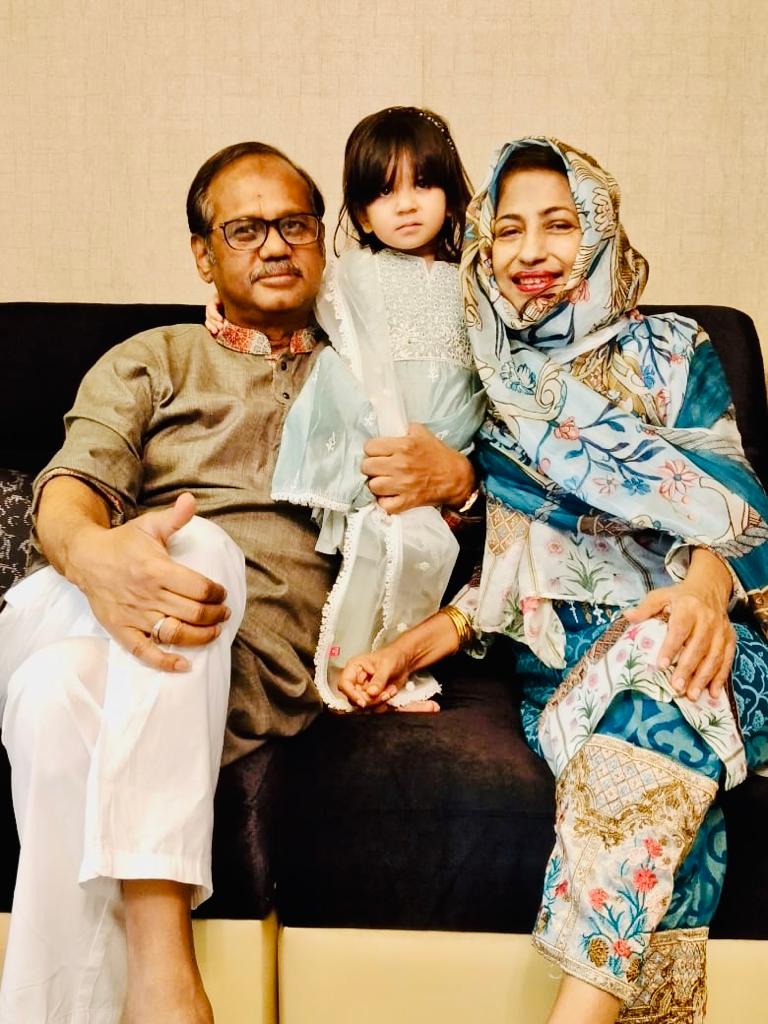
Do you want to share your contribution, which you shared with us on the record, regarding your son?
About ten years ago, I gave my wife a kidney. But, she sadly passed away in 2020. I was destined to contribute to society or conduct excellent deeds for people. I have two kids. Their education is being completed abroad. I send them abroad for study with the one requirement that they return and take care of my business. Although I make policies, I don’t have any directing responsibilities. My sons are in charge of this area, which relieves me. In this industry, I can do more work.
What’s your plan for Bangladesh and its native people?
As far as we are aware, we remain on the LDC list. We’re soon going to be an MDC nation. And our employees put in much effort. Our people are far better than those in other nations. They are submissive. I have visited a vast number of international locations. I can distinguish between them. Our people are incredibly kind and wise. If we gave them some activity or homework, they made it lovely. As a result, we began with 12,000 dollars in exports, as I previously mentioned.
The export sector presently has 45.7 billion dollars. Because of our people, it happened. The combined efforts of all of them and those of our government, the private workforce, and entrepreneurs made a significant contribution. I have much hope for the people who put in much effort for us. Our policy is firm. We will soon join the MDC countries if we successfully adequately train and educate them.
Do you have any stories that you want to share with us?
The physicians informed me that my wife’s creatinine level was too high to control in 2012 when I traveled to Singapore for her treatment. They told me that she required a kidney transplant right away. I decided to donate my kidney to my wife because finding a suitable donor took me a while. The doctor arrived and questioned why I decided to donate my kidney. I only said that this was the perfect opportunity to show her how much I appreciated all that she had done for me during her life. I can’t stand by and watch her go through this. Her blood type was B+, whereas mine is A+. As a result, the doctors chose plasma therapy, which is highly expensive. I made the financial arrangements before my kid visited Singapore. Being the youngest son of my parents, I decided not to tell them at that time.
Finally, the procedure was completed successfully. However, her condition deteriorated in July 2020, during the pandemic. Nobody was at the airport. Finally, the doctor and nurse arrived and escorted us off the plane. In Singapore, we visited a hospital. The food was placed in front of my door for me. My wife and I were staying on separate floors. And after only seven days of struggling, she departed dead. I wasn’t even able to glimpse her body because of pandemic limitations. The next day, I returned to my nation with her body. I am happy to have done something extraordinary for my wife and feel pleased whenever I think about it.
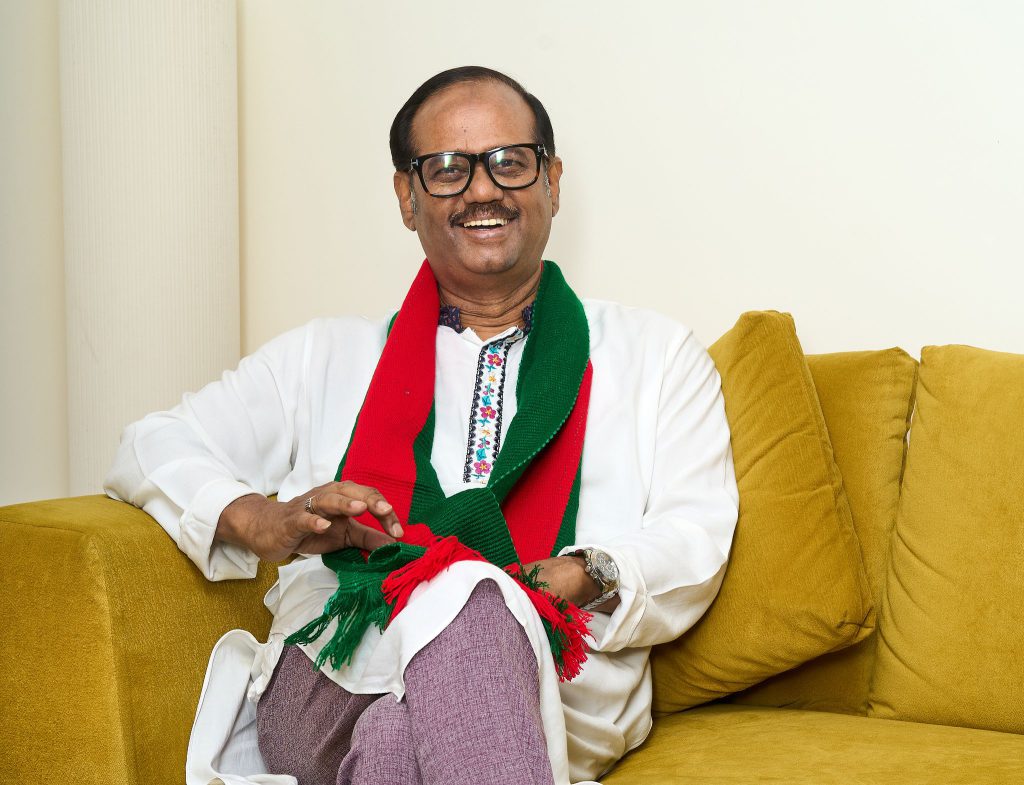
Quick Chat
The most outstanding achievement of your life as of now.
Donate my one kidney to my beloved wife.
How do you define patriotism?
I always teach my son three things: love your parents, believe in religion and be patriotic. They have returned to their motherland. They cannot stay permanently abroad. They have to serve the country.
Greatest philosopher in your view?
Sheikh Mujibur Rahman.
Meaning of “Success” to you.
Being a good man, contributing to society, and seeing a smiling face.
Who is your Icon?
My Third Elder brother is named Mr. Habibullah.
Name the most influential books you have read.
The Hundreds.
What did you want to be when you were a child?
I want to become a good human being.
Which is the best gift you have ever received?
My son’s.
Your greatest fear.
I am losing my reputation.
What motivates you?
I give money to some children who need more money to continue their education. It motivates me.
Your favorite holiday destination
Venice
How do you want to be remembered?
By being a good man
To read more Cover Stories, Please Click Here!



